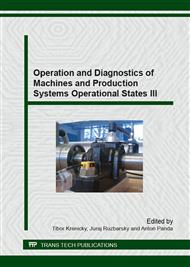p.311
p.319
p.327
p.335
p.345
p.353
p.361
p.373
p.382
Predictive Diagnostics of Wet Bottom Boilers Operational States by Calculation of Steam Coal Ash Fluid Temperature
Abstract:
This article deals with the issue of steam coal ash fluid (or fusion) temperature evaluation by mathematical method, based on comparison of statistic values obtained by laboratory analysis. The ash fluid temperature is very important parameter for Wet Bottom Boilers operation states because of quality of slagging. The ash composition has the biggest impact to the operation effectiveness and reliability of the Wet Bottom Boilers. It can directly influence the boiler production. Importance of information on ash fluid temperature increased after more strict of NOx emission limits (below 600 mg/m3) become obliged. WBB were initially designed for optimal operation with high temperatures in combustion chamber, with a production of high amount of NOx (often about 1400 mg/m3). The ash fluid temperature is usually determined by laboratory only, but it requires certain time and costs. Authors tried to bring faster and easier way how to evaluate of ash fluid temperature with acceptable accuracy of the parameter as predictive diagnostics [6] of the future boiler operational states.
Info:
Periodical:
Pages:
345-352
Citation:
Online since:
October 2015
Authors:
Price:
Сopyright:
© 2016 Trans Tech Publications Ltd. All Rights Reserved
Share:
Citation:


